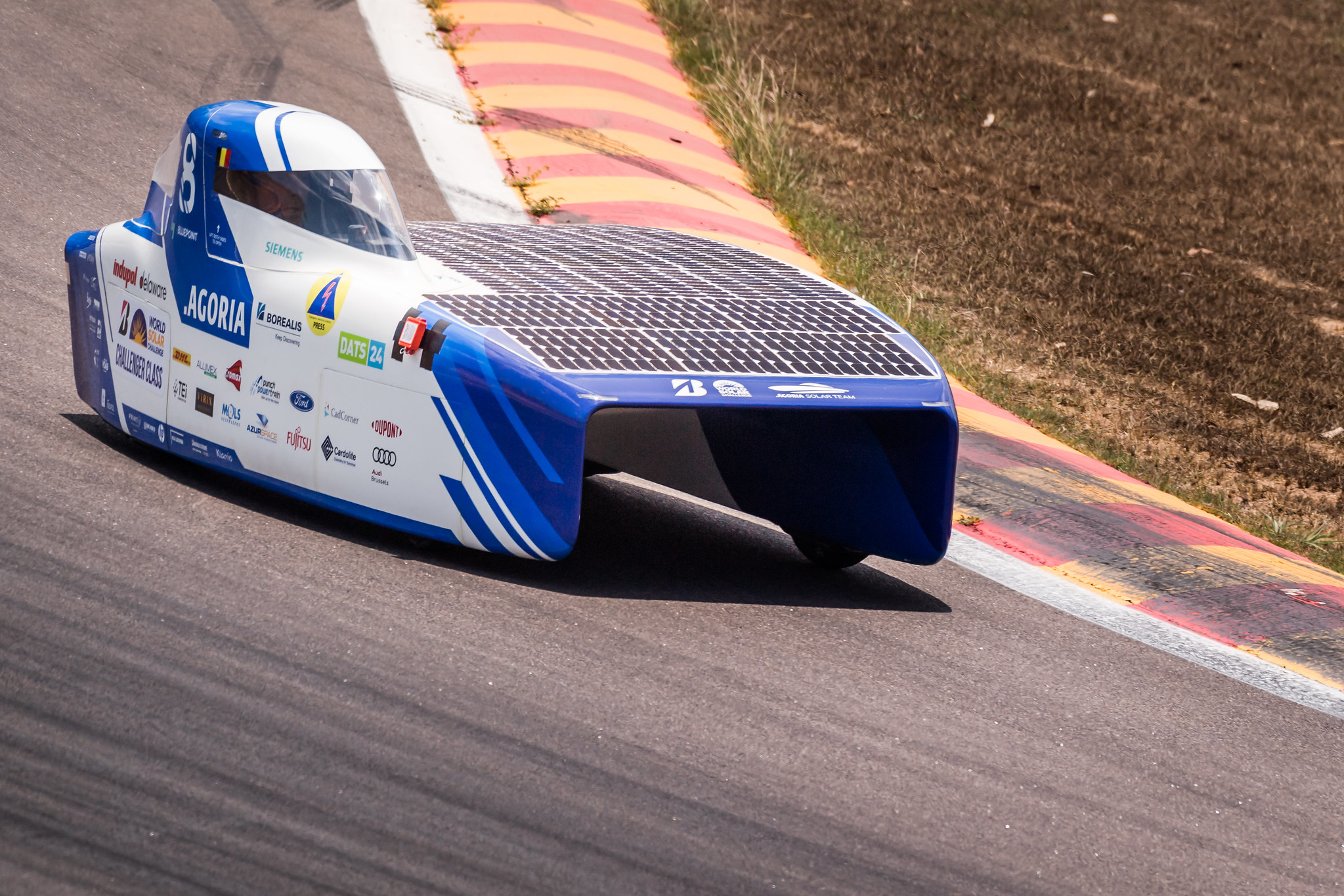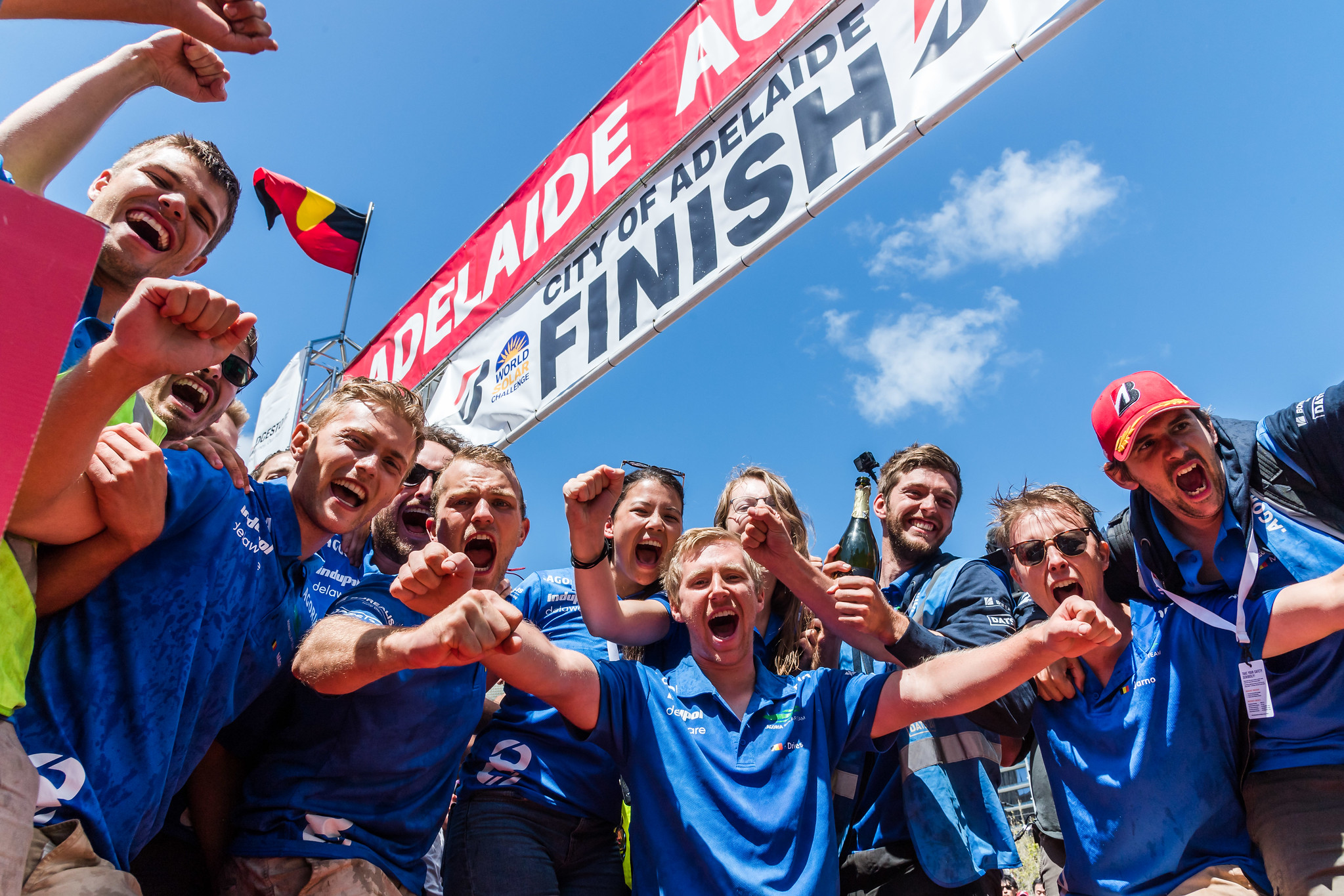Fastest Under the Sun: Solar Team Leuven Wins World Solar Challenge
Every two years, student teams from leading international universities come together to race their electric vehicles at the Bridgestone World Solar Challenge. Taking place in Adelaide, Australia, the 3021 km long race track is one of the leading meeting points for enthusiasts of solar powered cars. With no more than six square meters of solar panels, these young teams show what it means to combine efficiency with sustainable energy.
One of them is 2019 world champion, Agoria Solar Team. The 19-student formation from the University of Leuven, Belgium, had about 15 months to complete a car powered exclusively by solar energy. Their latest model, BluePoint, was their eighth participation in the international competition.

One of the most difficult challenges is to determine the design with the greatest possible efficiency. The composite engineers had a particularly tricky task as they wanted to make the car's structure as light as possible while still maintaining a certain stiffness. Despite the constraints, the students felt equipped to find an optimal solution using Altair HyperWorksTM.
Starting off, the aerodynamic engineers designed the basic shape of the car in order to reduce drag as much as possible, which is one of the major contributors to energy-efficiency. After completing their design, it was the composite engineers' turn to create an internal structure in which all mechanical and electrical systems would fit. Afterwards, the weight of this structure was reduced to be as light as possible, but still stiff and strong enough to meet all given constraints and safety measures.
With the help of HyperWorks, the team was able to optimize the carbon structure of the car and reduce the overall weight to 135 kilograms – which makes the BluePoint the lightest Belgian solar car ever built.

During the process, Altair HyperMeshTM had been used for pre-processing, Altair OptiStructTM as a structural solver, and Altair HyperViewTM for post-processing. In the software, students liked the advanced and unique features for highly complex composite structures such as ply entities that allow defining the shape of individual layers based on geometry, or laminate entities that help to define the stacking sequence of a composite part.

"It really is an unbelievable feeling to consider ourselves as world champions of this race, " said team manager Willem-Jan Claes. "Altair solutions played a significant part in this extraordinary result by helping us to design the optimal carbon structure. They will also help us in the future to design and further optimize our BluePoint solar car for upcoming competitions."
To learn more about Altair’s optimization tools, click here.

One of them is 2019 world champion, Agoria Solar Team. The 19-student formation from the University of Leuven, Belgium, had about 15 months to complete a car powered exclusively by solar energy. Their latest model, BluePoint, was their eighth participation in the international competition.

The Belgian students worked 15 months to complete their car
Synergy of nature and innovation for the optimal interior structureOne of the most difficult challenges is to determine the design with the greatest possible efficiency. The composite engineers had a particularly tricky task as they wanted to make the car's structure as light as possible while still maintaining a certain stiffness. Despite the constraints, the students felt equipped to find an optimal solution using Altair HyperWorksTM.
Starting off, the aerodynamic engineers designed the basic shape of the car in order to reduce drag as much as possible, which is one of the major contributors to energy-efficiency. After completing their design, it was the composite engineers' turn to create an internal structure in which all mechanical and electrical systems would fit. Afterwards, the weight of this structure was reduced to be as light as possible, but still stiff and strong enough to meet all given constraints and safety measures.
With the help of HyperWorks, the team was able to optimize the carbon structure of the car and reduce the overall weight to 135 kilograms – which makes the BluePoint the lightest Belgian solar car ever built.

The BluePoint is powered by four square meters of solar panels
With lightweight efficiency to victoryDuring the process, Altair HyperMeshTM had been used for pre-processing, Altair OptiStructTM as a structural solver, and Altair HyperViewTM for post-processing. In the software, students liked the advanced and unique features for highly complex composite structures such as ply entities that allow defining the shape of individual layers based on geometry, or laminate entities that help to define the stacking sequence of a composite part.

Results of the composite stress simulation
The team's racing strategy to focus on reliability and the finished car paid off. In a head-to-head race, the Belgians were able to eliminate a 43-minute time difference during the penultimate day of the race – and, eventually, they won."It really is an unbelievable feeling to consider ourselves as world champions of this race, " said team manager Willem-Jan Claes. "Altair solutions played a significant part in this extraordinary result by helping us to design the optimal carbon structure. They will also help us in the future to design and further optimize our BluePoint solar car for upcoming competitions."
To learn more about Altair’s optimization tools, click here.

Time to celebrate! Solar Team Leuven wins World Solar Challenge




